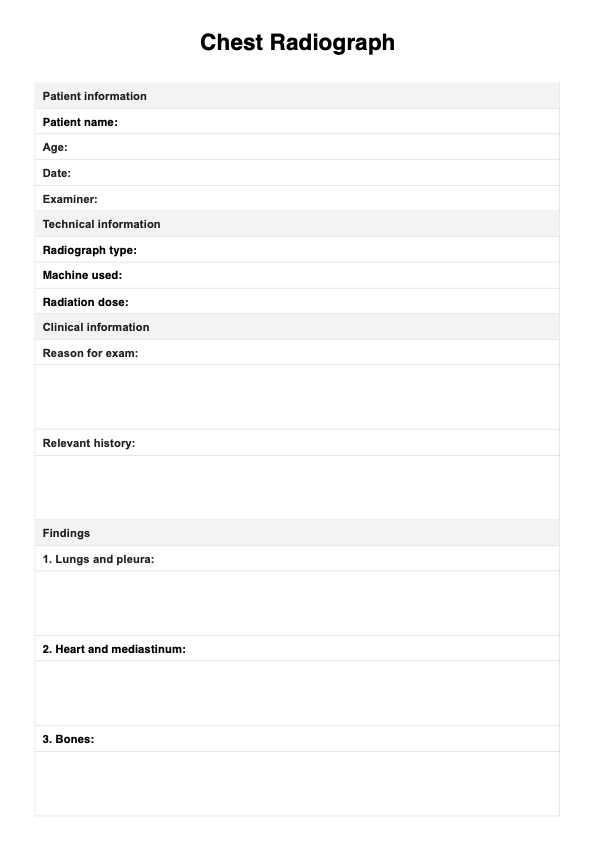A Chest Radiograph can provide valuable information about the heart, lungs, airways, bones of the chest and spine, and the diaphragm, helping to detect conditions such as pneumonia, heart failure, fractures, and tumors.

Chest Radiograph
Explore our detailed guide on Chest Radiography, offering insights into effective diagnostic techniques for various thoracic conditions. Download the free PDF now.
Chest Radiograph Template
Commonly asked questions
A Chest Radiograph is a quick procedure, typically taking only a few minutes to complete, as the actual exposure to radiation lasts only a fraction of a second.
The benefits of a Chest Radiograph include its speed and ease of use, the minimal radiation exposure compared to other imaging forms, and its effectiveness in diagnosing a wide range of chest and lung conditions, which can lead to timely and appropriate medical treatment.
EHR and practice management software
Get started for free
*No credit card required
Free
$0/usd
Unlimited clients
Telehealth
1GB of storage
Client portal text
Automated billing and online payments











